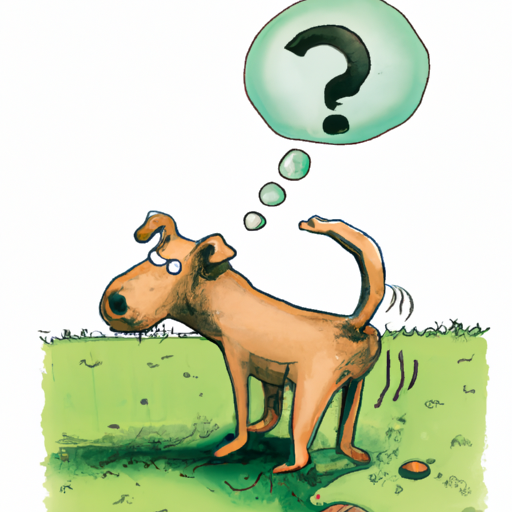As a caregiver, you’re likely very familiar with the habits and behaviors of your dog. You’ve probably noticed your dog doing something quite peculiar from time to time – scooting their bum across the floor. But why do dogs do this? Let’s dive in and find out.
H2: Understanding the Scooting Behavior
Seeing your dog drag their bum on the ground, often referred to as “scooting,” can be quite amusing, but it can also be a sign of a health issue that needs to be addressed. Dogs do not do this to amuse you, but because they are feeling discomfort and are trying to relieve it.
There are several reasons why a dog might start to scoot, including:
- Anal gland issues
- Intestinal parasites
- Allergies
- Dermatitis
- Foreign bodies or hair mats around the anus
- Tumors or other abnormalities in the anal area
H2: Anal Gland Issues
One of the most common reasons dogs scoot their bums is due to issues with their anal glands. These small, pea-sized glands are located on either side of your dog’s anus and are designed to secrete a smelly liquid when your dog defecates. If these glands become blocked and cannot expel the liquid, it can cause your dog discomfort. This often leads to bum rubbing as they try to express these glands themselves.
| Symptoms of Anal Gland Issues |
|---|
| Persistent scooting |
| Chasing tail |
| Licking or biting at the anus |
| Painful defecation |
| Swelling or redness around the anus |
H2: Intestinal Parasites
Another common cause of bum scooting is intestinal parasites, such as tapeworms or pinworms. These parasites can cause itchiness around your dog’s anus and lead to scooting behavior. Your vet can diagnose these parasites through a fecal sample and prescribe appropriate treatment.
H2: Allergies and Dermatitis
Allergies to food or environmental factors can cause itchiness around your dog’s bum, leading to scooting. Similarly, dermatitis, an inflammation of the skin, could make your dog uncomfortable enough to start dragging their bum.
H2: When to Seek Veterinary Assistance
If your dog is scooting frequently or showing other symptoms like redness, swelling, or difficulty defecating, it’s time to seek veterinary assistance. A vet can diagnose the issue and offer treatment options, which may include expressing the anal glands, prescribing medication for parasites or allergies, or recommending dietary changes.
Frequently Asked Questions
Why does my dog scoot after grooming?
Grooming can sometimes irritate a dog’s anal area, especially if their anal glands were expressed during the grooming session. If your dog continues to scoot a few days after grooming, consult your vet.
Can I express my dog’s anal glands myself?
While it’s possible to express your dog’s anal glands yourself, it’s generally recommended to have a professional do it to avoid injury or infection.
Can a change in diet help with my dog’s scooting behavior?
Yes, a diet high in fiber can help ensure your dog’s anal glands are expressed naturally during defecation.
Does scooting always mean there’s a health issue?
While scooting can be a sign of a health issue, it doesn’t always mean there’s a problem. Sometimes, dogs scoot because they have an itch or because it feels good. However, frequent or persistent scooting should be checked by a vet.
Remember, as a caregiver, it’s your responsibility to keep an eye on your dog’s behavior and seek help when necessary. Now that you understand why dogs rub their bum on the ground, you can better care for your furry friend.



